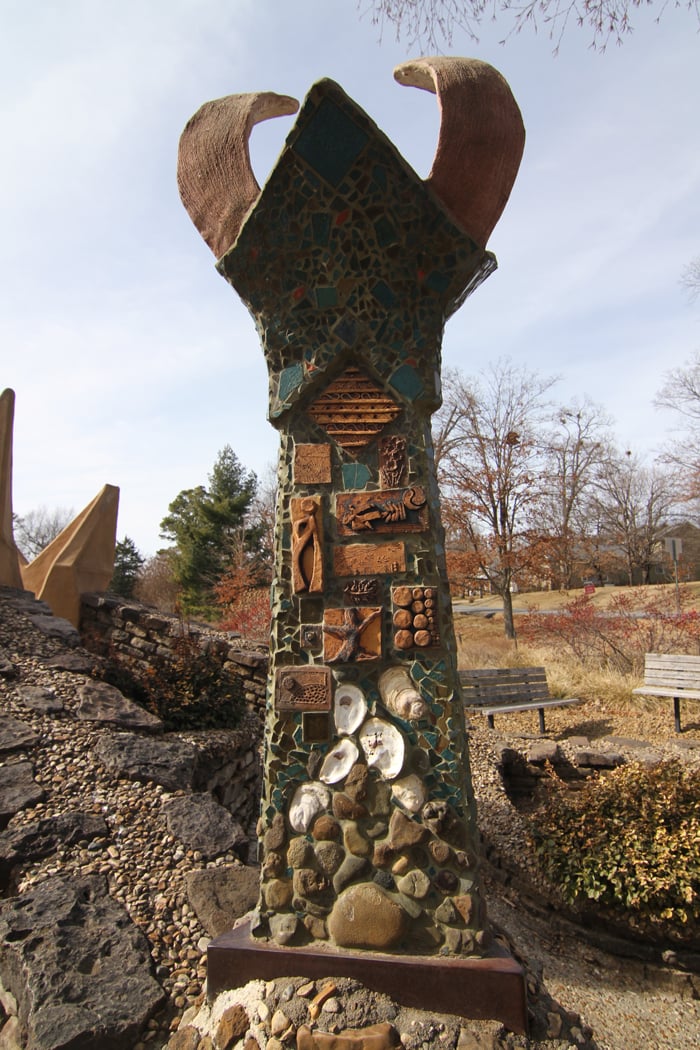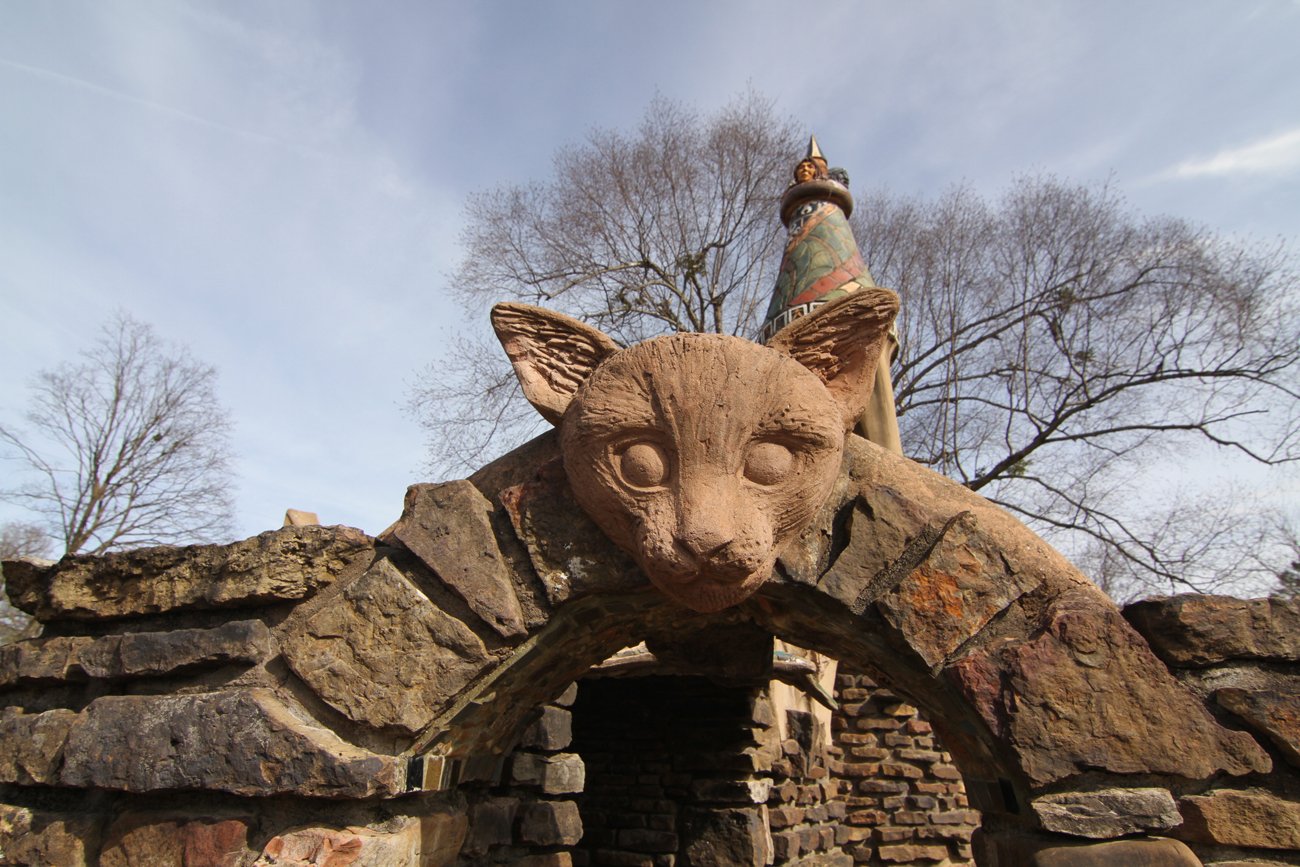
‘Point 7’ by Frank Williams / All photos: Flyer Staff
It is a fortress. A king’s castle. A homebase, and a hideout.
It has been a pirate ship, at times, or a wizard’s lair. A hobbit’s house. A spaceship.
Its official name is “Point 7,” though most locals know it simply as the castle at Wilson Park.
The structure, located at the northeast corner of Wilson Park has inspired generations of Fayetteville children, teenagers, and adults for nearly 40 years.
Construction on the castle began in the summer of 1979 by artist Frank Williams, who was working with the Arkansas Arts Council on a new (at the time) Craft’s Apprentice Program.
Williams was born in St. Louis, and studied as an undergrad at Southwest Missouri State University before coming to Fayetteville to study in the UA’s MFA program.
We recently stumbled on a fascinating post on his website about the process of creating the castle, now one of the most recognizable landmarks in the city.
Williams was approached by the city parks board to redesign a spring house next to a youth baseball field adjacent to the park. Williams had about two weeks to design the project, and what he came up with in that short amount of time became one of the most iconic – and magical – sites in the city.
“The springhouse was an eyesore and the spring fed stream coming from it was choked with weeds and water cress,” he recalled in an address he created for the 25th anniversary of the creation of the castle. “It was in an open area next to the ball diamond and used by the players and their fans to park their cars and trucks and maybe have a cool one in between innings.”
As he tells it, the project was supposed to take about 3-4 months, but ended up taking him more than a year to complete. There were budget concerns, he said, and city officials at the time told him there wouldn’t be much (if any) in the way of funds for maintenance for the project.
“I felt that to the best of my ability I would build something durable; but in “faux” decay! New, but reflecting antiquity, and hopefully it would be miraculously enhanced by wear, tear, and vandalism as it reverted to nature,” he said.
Inspired by the architecture of Antoni Gaudí, the castle is made from mostly native stone and concrete, with ceramic tile, colorful stones, and oyster shells providing mosaic accents to the design.
The spring creates a little pond in front of the castle, with a fountain near the center. An elaborate bridge crosses the spring as it makes its way south toward the city. There are dozens of sculptural elements to the castle, and even frequent visitors to the site could likely find something new to discover each time they visit.
There’s a tower, adorned with sculpted heads, symbols, and a pointed top.
The castle was almost an immediate hit, even before it was completed.
“We couldn’t even keep the kids off the site even during construction,” Williams wrote.
That’s still the case today, as even in the winter months, it’s difficult to find a time when children aren’t exploring the structure, climbing its tower, traversing the bridge, and playing in the clear spring water.
You’ll find teens taking senior photos there, or adults on the benches surrounding the castle, soaking up sun.
It’s one of the most magical places in Fayetteville, and if you aren’t familiar with it, you’re really missing the Point.





